Feb 28, 2024
Bridging the Gap between Smart Cities & Urban Agriculture
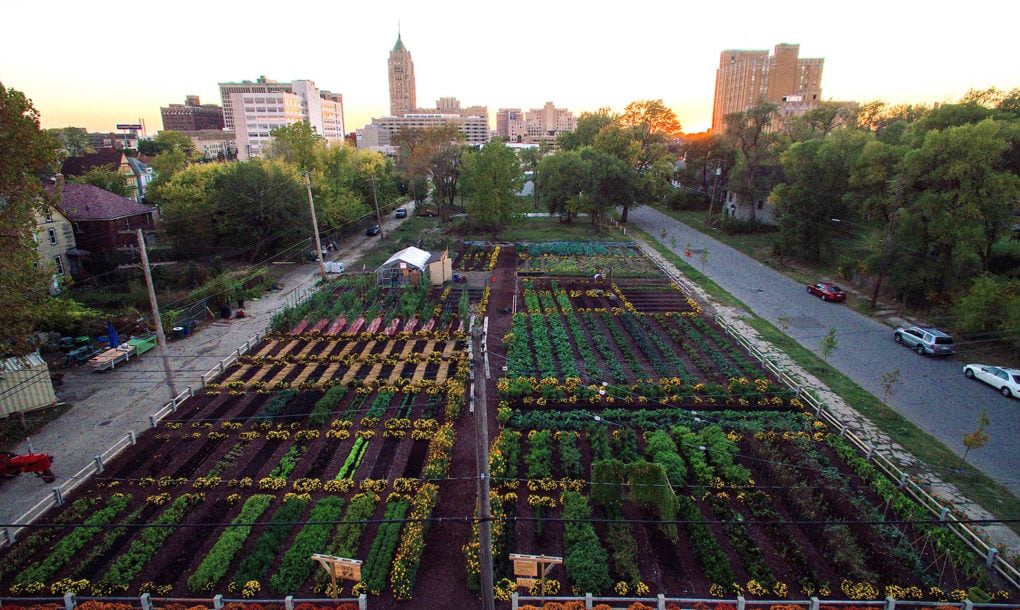
image courtesy of Michigan Urban Farming Initiative
Written by: Niko Simos
January 15, 2024
In the ever-evolving landscape of urban development, the symbiotic relationship between smart cities and urban agriculture is emerging as a beacon of sustainability and innovation. As urban populations continue to grow, the need for creative solutions to address challenges such as food security, economic growth, and climate change becomes increasingly urgent. Enter the intersection of smart city technologies and urban agriculture, a realm where ingenuity meets necessity, and where the future of our urban spaces takes root.
Defining Smart Cities and Their Initiatives
In the dynamic landscape of urban development and urban populations, the concept of smart cities has emerged as an innovation, weaving together information and communication technologies (ICT) to redefine the way urban areas function. Today's smart cities aspire to be sustainable, socially inclusive, and environmentally conscious with creative solutions. This quest for intelligent urban living involves the integration of cutting-edge solutions, IoT devices, and collaboration with the private sector to revolutionize decision-making processes.
A sustainable smart city embodies the fusion of technological advancements with a commitment to minimizing environmental impact. These cities harness the power of digital innovation not only to streamline administrative functions but also to tackle broader challenges such as optimizing energy consumption and curbing carbon emissions. The ultimate goal? To create urban spaces that are not just efficient, but also resilient, inclusive, and responsive to the needs of the citizens they serve. The deployment of IoT devices forms the nervous system of these intelligent urban environments, collecting and disseminating data that fuels informed decision-making. From traffic management to waste disposal, every facet of city life stands to benefit from the precision and insight that these interconnected devices bring to the table.
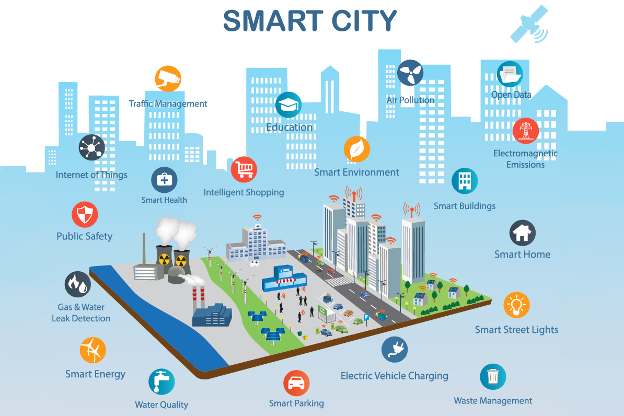
image courtesy of Adtell Integration
Crucially, the collaboration with the private sector is a linchpin in the realization of smart city initiatives. By fostering partnerships with innovative businesses, cities gain access to cutting-edge technologies and expertise, accelerating the implementation of sustainable solutions. This collaboration also catalyzes economic growth and job creation, establishing a cooperative relationship between public and private entities in the pursuit of a shared vision for smarter, more resilient urban spaces.
Some smart city projects are:
1. Singapore
Singapore consistently stands atop global rankings for smart cities, a testament to its unwavering commitment to cutting-edge technology. In the IMD's 2020 and 2021 rankings, Singapore retained its position, showcasing a steadfast dedication to smart city initiatives. Recognizing the challenges posed by an aging population, Singapore's government has strategically embraced digital technologies, implementing initiatives like a digital healthcare system. This system includes the normalization of video consultations and the integration of wearable IoT devices for remote patient monitoring.
The city-state, renowned for its forward-thinking approach, operates as the world's second-most densely populated city. Under its Smart Nation vision, Singapore leverages smart city infrastructure to collect vast amounts of data through sensors strategically placed across the urban landscape. These sensors offer insights into citizens' daily activities, enabling the measurement of factors ranging from cleanliness to crowd density at events. Moreover, Singapore ambitiously aims to pioneer an eco-smart city, situated in Tengah, with a distinct focus on sustainability and the elimination of traditional vehicles.
2. Oslo
Oslo distinguishes itself as a smart city with a laser focus on creating a sustainable, eco-friendly environment. While sustainability and smart city initiatives often align, Oslo successfully embodies both concepts. The city boasts over 650,000 interconnected LED lights that dynamically adjust brightness based on real-time needs, showcasing a harmonious marriage of technology and sustainability.
Notably, Oslo has committed to an all-electric vehicle fleet by 2025, a substantial undertaking for a city of 670,000 residents. Incentives for zero-emission cars, including free parking, access to bus lanes, and reduced taxes and tolls, underscore Oslo's dedication to smart technology and environmental sustainability. In tackling traffic congestion, the city employs data-driven approaches, monitoring vehicles through license plate detectors to enhance traffic flow.
Another one of Oslo's initiatives includes its smart city bike lanes which blends sustainability with smart urban planning.
3. New York
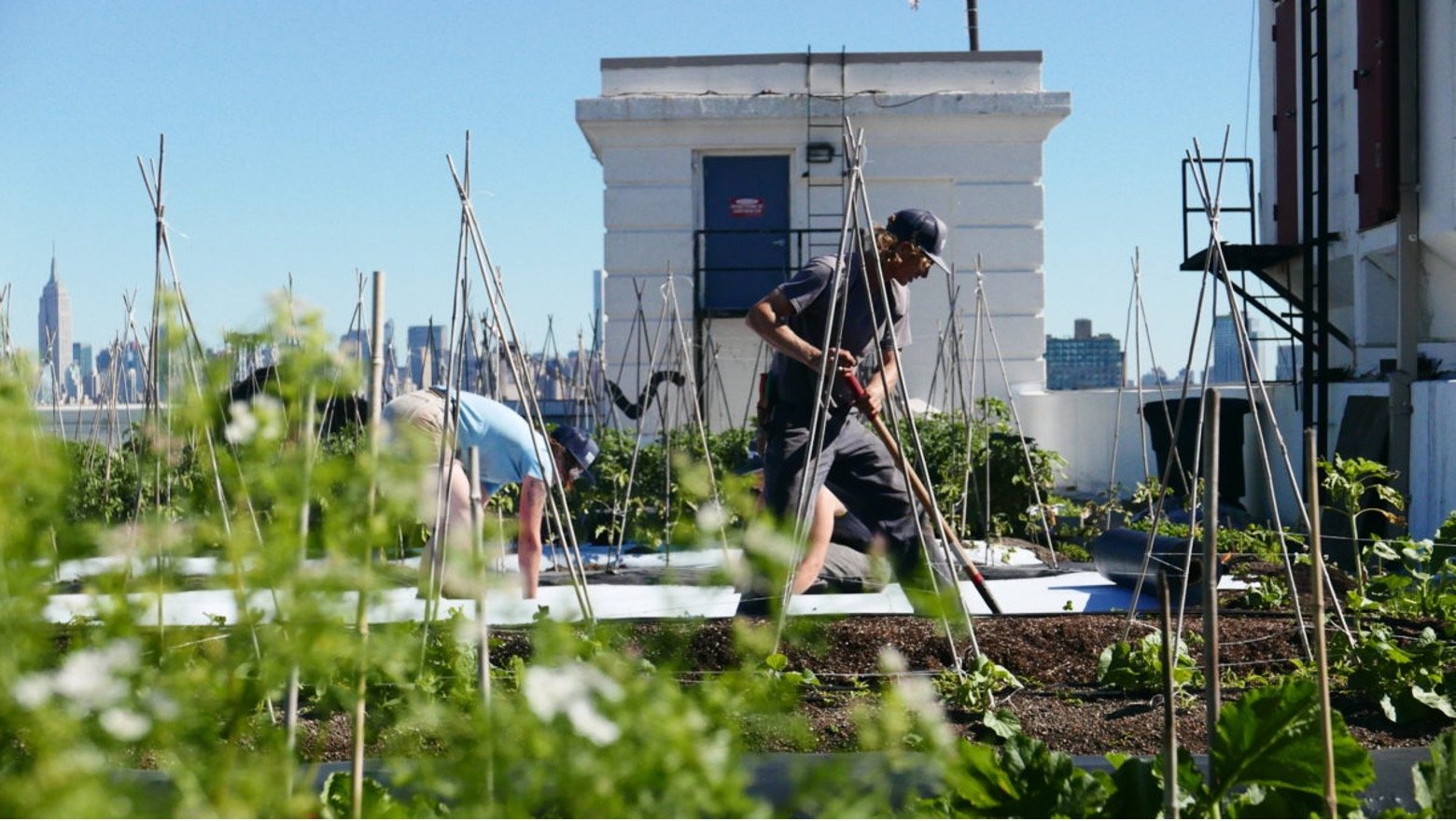
image courtesy of Brooklyn Grange
While New York may not top certain smart city lists, it stands as a global leader in smart city innovation. In a 2020 pilot project, about smart city solutions, hundreds of smart sensors were strategically placed throughout the city to collect extensive data, optimizing essential services like waste management. New York also enhances citizen connectivity by transforming traditional phone booths into WiFi-enabled charging stations.
With a keen eye on reducing emissions and managing traffic, New York has embraced car-sharing initiatives. This not only helps alleviate congestion but also contributes to the city's broader sustainability goals. The police department, demonstrating the city's commitment to data-driven decision-making, tested web-based software predicting and responding to crime based on historical data and terrain modeling. The success of this initiative has piqued the interest of other city agencies.
Yet, in the pursuit of technological excellence, sustainable smart cities must not lose sight of the human element. The essence of a smart city lies not just in its digital infrastructure but in how it enhances the well-being and inclusivity of its residents. Acknowledging the intrinsic connection between nature and well-being, integrating elements of nature into city landscapes becomes a powerful tool for positively impacting the lives of inhabitants. The profound sense of well-being associated with growing one's own food taps into a fundamental aspect of humanity that has shaped our world since the inception of agriculture. This primal connection to the soil, where planting seeds marked a pivotal moment in human history, can be rekindled within the context of smart cities. By investing in and seamlessly integrating urban farms into the urban fabric, smart cities have the potential to provide residents with the profound satisfaction of nurturing and cultivating their own sustenance. Architects and developers globally are actively exploring innovative ways to weave the concept of urban farming into the evolving tapestry of modern city concepts, recognizing the importance of reconnecting urbanites with the essence of cultivation that has defined human existence for centuries.
The Role of Urban Agriculture in Smart Cities
Urban agriculture, an important component of the smart city vision, redefines the landscape of food production. It encompasses a variety of practices, including community gardens, rooftop farming, controlled environment agriculture (CEA) in greenhouses, and futuristic vertical farms. According to the United Nations, urban agriculture has the potential to advance multiple Sustainability Goals.
Urban agriculture can act as a component of the smart city vision, redefining the landscape of food production by incorporating innovative practices such as community gardens, rooftop farming, CEA in greenhouses, and vertical farms.
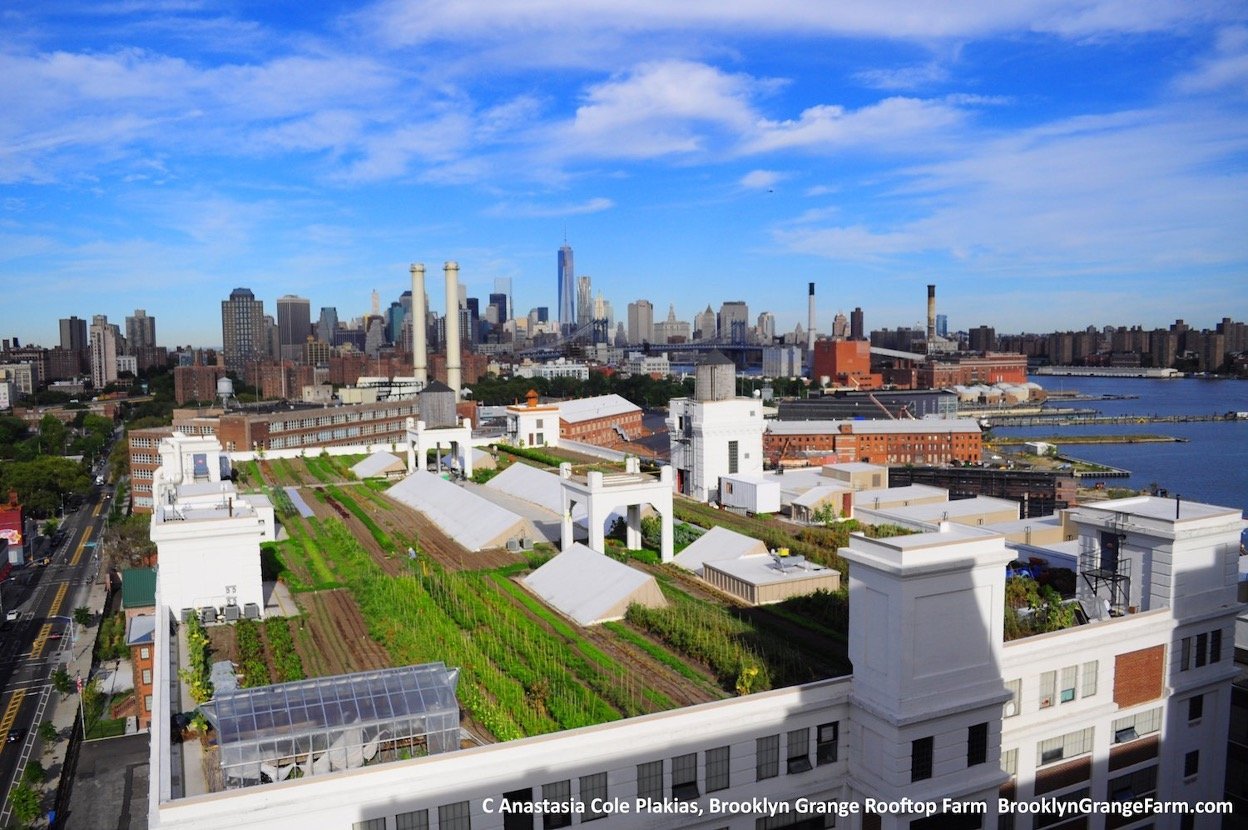
Beyond the technical sophistication, these approaches play a crucial role in building healthier communities. Community gardens, for instance, become communal spaces where neighbors connect over the shared endeavor of cultivating fresh produce and fostering a sense of belonging and responsibility. Rooftop farming not only optimizes underutilized urban spaces but also functions as green oases, contributing to improved air quality and community well-being. Additionally, resource-efficient applications enable CEA greenhouses to create optimal growing conditions, ensuring a year-round supply of locally grown crops. The concept of vertical farming not only maximizes space but also significantly reduces emissions associated with long-distance food transportation. As residents actively participate in local food production, the reliance on external sources diminishes, resulting in a noteworthy reduction in carbon emissions. This shift towards localized, smart urban agriculture not only ensures food security but also plays a vital role in mitigating the environmental impact of traditional agricultural practices. Architects and developers, steering the course of urban design, are poised to integrate these sustainable practices into the design of our cities, creating a future where communities thrive in harmony with the environment.
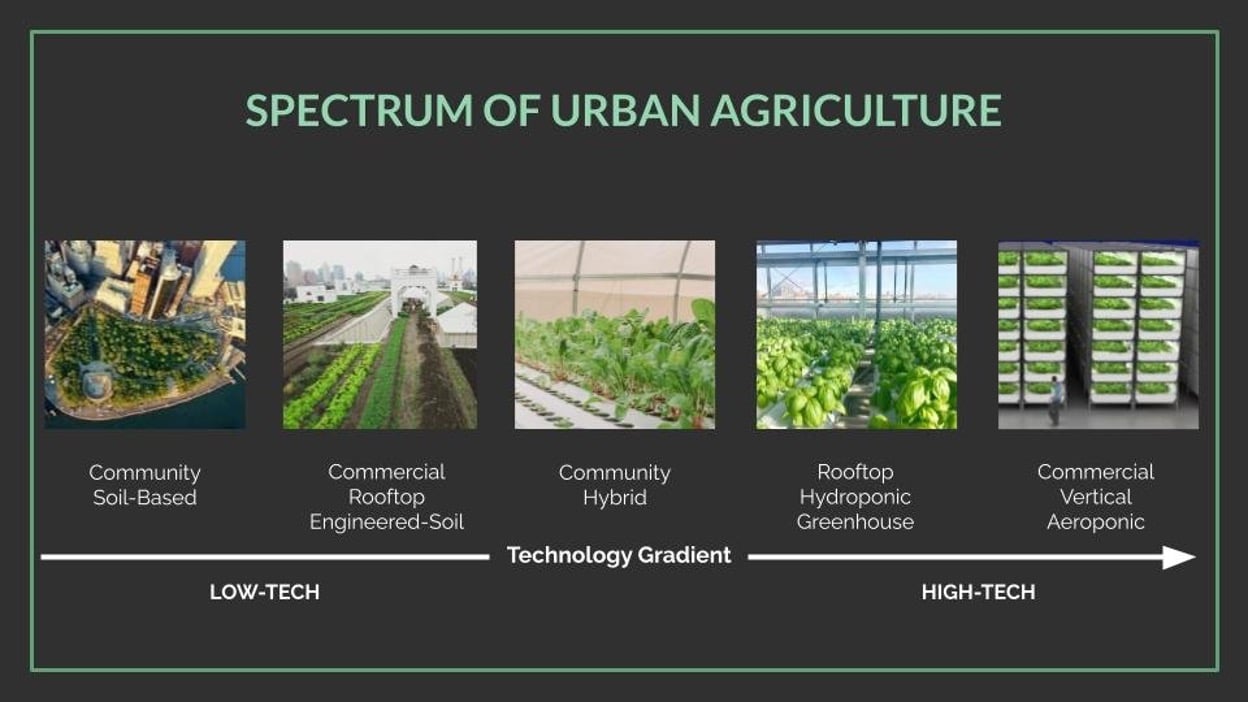
Assisting Smart Cities in Navigating Urban Agriculture Challenges
Developers and architects, driven by a shared commitment to fostering environmentally sustainable and community-centric urban spaces, often encounter a significant hurdle – a lack of agricultural expertise. The seamless integration of urban farms into city planning requires a nuanced understanding of agricultural intricacies, ranging from capital expenditures and operational costs to specific crop selection, resource consumption, and alternative farming methodologies like greenhouses or vertical farms.
Key questions and challenges frequently faced by developers and architects include:
Determining Available Land:
The first challenge lies in identifying and assessing available land suitable for urban farming. Location is crucial; farms must be proximate to the population to encourage engagement, community involvement, and various activities. A farm situated far from the urban center hampers accessibility and defeats the purpose of integration. Considering the available land and the local demand from residents interested in purchasing locally grown produce, architects can explore the incorporation of community farms or vertical farming solutions tailored to the specific needs and preferences of the surrounding population.
Crop Selection and Requirements:
Choosing the right crops involves considering diverse factors such as density, growth duration, yield, water, and sunlight requirements. Architects and developers often grapple with decisions on what to grow and how much, necessitating a comprehensive understanding of each crop's demands. The choice between cultivating crops in an open field or within a controlled environment, such as a greenhouse, depends on the prevailing climate and geographic conditions, with certain crops thriving more easily in specific settings.
To streamline this process, architects and developers often turn to agricultural consultants, like Agritecture, for expert guidance. Through these partnerships, they can access tailored solutions to their queries and receive valuable insights on optimal crop choices, resource allocation, and the integration of innovative farming technologies like vertical farming, hydroponics, and rooftop farming. Empowering architects and developers with this agricultural expertise ensures that the vision of sustainable, integrated urban farms becomes a thriving reality in the evolving landscape of smart cities worldwide.
In conclusion, the synergy between smart cities and urban agriculture holds the key to a sustainable and resilient future. Architects and developers play a pivotal role in shaping this future, integrating smart technologies into urban design and agricultural practices. By fostering collaboration and embracing innovation, we can build cities that not only thrive in the digital age but also nourish their populations and contribute to the well-being of the planet. The bridge between smart cities and urban agriculture is not just a connection; it's a pathway to a more sustainable and vibrant future.
